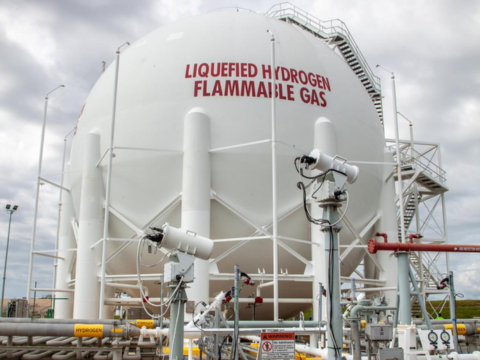24th January, 2024
Hydrogen aircraft face many challenges. The aircraft technology is still being developed and tested, early market entrants are likely to operate only short to medium-haul routes, airports would need to be redesigned to provide the right infrastructure for refuelling, and customers would need persuading that the planes would be safe to fly in. That’s before you even start to think about the challenge of providing enough green hydrogen (produced by using renewable energy to split out hydrogen from water) given competing demands from other sectors.
Nevertheless, there’s real hope that hydrogen, whether as a liquid fuel or in a fuel cell. It is worth pursuing in aviation since hydrogen planes generate no CO₂ in flight and hydrogen can, in theory, be produced without fossil fuels.
One important issue to weigh in the balance, though, is aviation’s non-CO₂ impact. As well as the CO₂ emissions that build up in the atmosphere and cause warming, aviation has specific ‘non-CO₂ impacts’ on the climate, including from NOₓ and contrails, that are shorter-lived but which, overall, have tripled the total warming effect of aviation to date. There is speculation that alternative liquid fuels (sometimes called Sustainable Aviation Fuel) may cause less non-CO₂ warming than traditional jet fuel, despite generating no less CO₂ at the tailpipe, though further research is still needed to assess this.
Meanwhile, what about the non-CO₂ effect of hydrogen planes? If a byproduct of hydrogen use is water vapour, will that increase the likelihood of contrail formation? And if it does, will these contrails behave the same or differently to contrails from jet aircraft? These are the questions that a new report, ‘Non-CO₂ impacts of hydrogen,’ commissioned by AEF from the University of Leeds attempts to answer.
We asked The University of Leeds to undertake a review of the current state of knowledge on the non-CO₂ climate impacts of hydrogen as an alternative aviation fuel. The report’s top line message is that hydrogen-fuelled aircraft are likely to generate lower non-CO₂ warming than conventional kerosene-powered aircraft, although further work is needed to better understand these impacts compared to fossil jet fuel.
Further work to reduce atmospheric scientific uncertainties would help to quantify the climate impact: published studies to date suggest a lower contrail forcing but they remain inconclusive and the change in aviation-induced cirrus as a result of switching to hydrogen could be of either sign (positive or negative). The report explains that:
“Hydrogen-fuelled combustion aircraft will almost certainly create contrails, but they will be different to those generated by kerosene due to the different exhaust temperatures plus changes to water vapour and soot emissions. The higher exhaust temperatures of liquid hydrogen combustion aircraft reduce the likelihood of contrails forming, but the dominant effect is the substantial increase in water vapour emissions which means that overall contrails are more likely to form.”
Ultimately, however, the altitudes at which hydrogen aircraft are flown could have the largest impact on contrail formation.
With regard to the net effect of NOₓ, this depends on the time period and the balance of different warming and cooling effects but is estimated to be a warming effect in the current climate, and to become more negative in future climates. How NOₓ emissions change depends heavily on new engine architectures and these remain uncertain.
But the biggest and most overlooked uncertainty involves aviation particulate emissions and their role in modifying clouds, which may play a more important role in acting as cloud condensation nuclei as sulphur emissions from shipping and coal are reduced. The strength of this forcing has important implications for the role of hydrogen and other particulate-free fuels.
The report also cautions that a 2% hydrogen leakage rate from the aircraft could meanwhile lead to considerable short-term warming, countering a significant fraction of any CO₂ emission reduction benefit gained.
Our view?
It’s good news that hydrogen planes seem likely to have at least no worse a non-CO₂ impact than kerosene, and could have the potential to generate lower warming. While big challenges remain in terms of bringing hydrogen planes to market, the potential for zero CO₂ flight that they offer suggests there’s a clear benefit in our view to continuing with R&D.
But we must not lose sight of the fact that they are unlikely to be climate neutral, even if the preconditions for green hydrogen are met to produce zero CO₂, so research on non-CO₂ mitigation measures for hydrogen flight should be progressed in parallel.
Further reading:
‘Target True Zero: Government Policy Toolkit to Accelerate Uptake of Electric and Hydrogen Aircraft,’ World Economic Forum, AEF, 2023.
